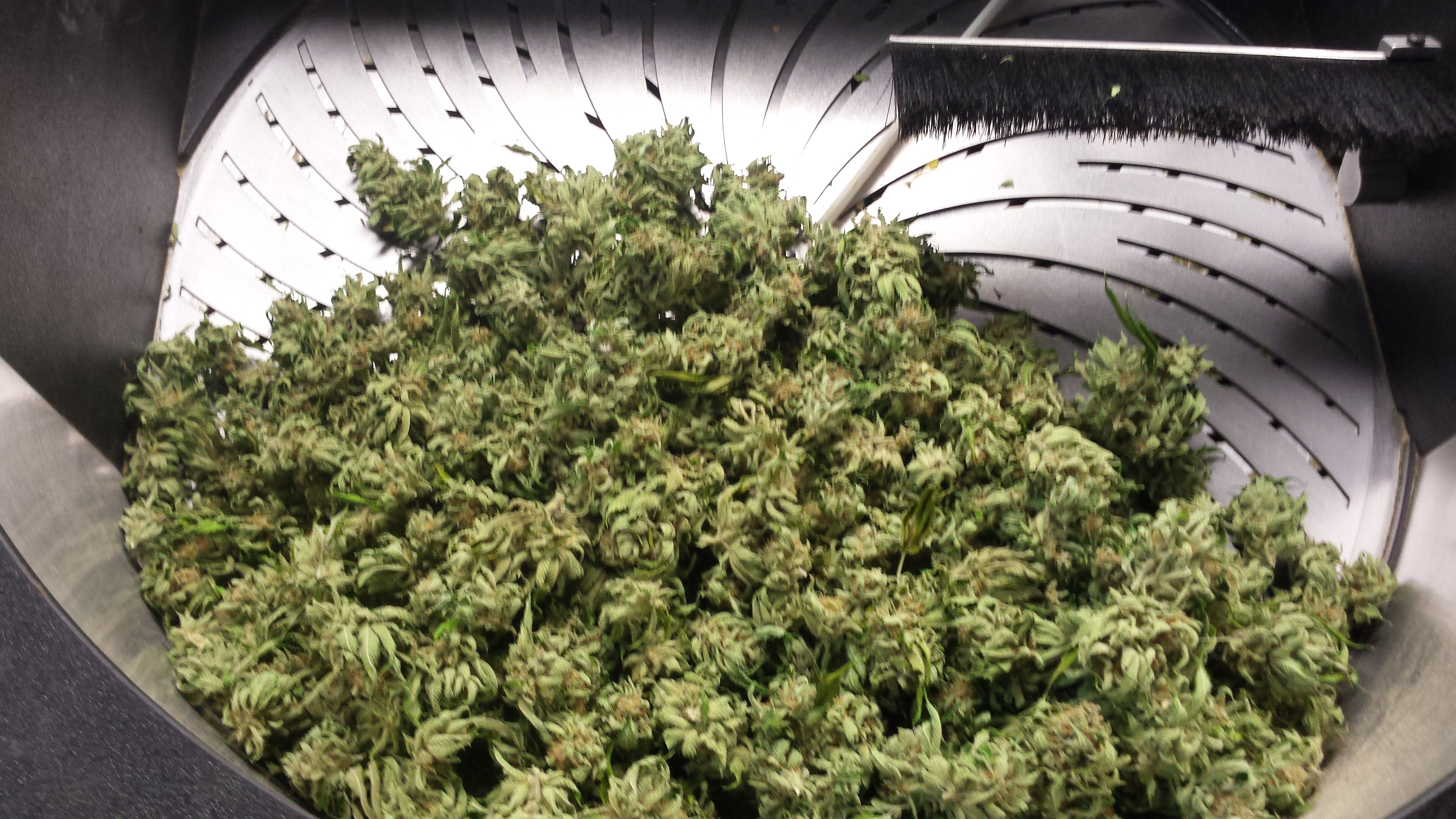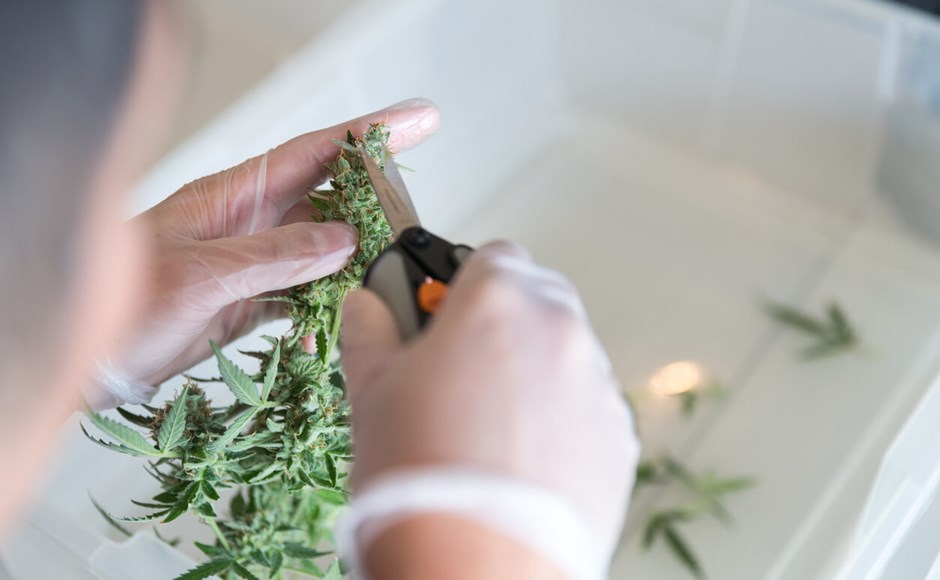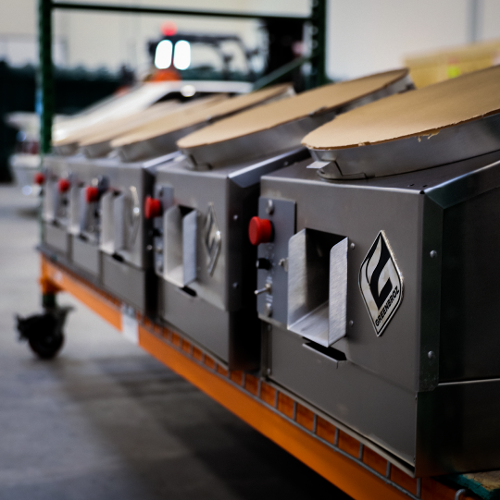The Ultimate Guide to Cannabis Equipment Maintenance
In the world of cannabis cultivation, your equipment is your best friend. Keeping it in pristine condition isn't just about prolonging its lifespan;...

Few, if any cultivators look forward to the labor-intensive process of trimming cannabis. This process has traditionally required a small army and takes place after harvesting. But with modern cannabis machines the harvesting process has been improved. Lets get into wet and dry trimming and its effects on trichome development.
Luckily, the evolution of cannabis trimmers is freeing craft home growers and commercial grow operations alike. A growing number of pot farmers are freeing themselves from trim jail and trimming buds by hand. Machine bud trimmers also have the added benefit of automatically collecting their cannabis trim. This allows for the trimmings and plant biomass to be use in other products such as cannabutter and topicals.
Trimming cannabis is the process of removing leaves from your buds. Every weed bud has extra leaves, meaning this is a huge part of the post-harvest work. Properly trimming weed can be the difference between an eighth that sells for $20 and one that sells for $65.
Trimming weed greatly reduces the chance of mold and mildew forming on your freshly harvested cannabis. These leaves can trap moisture, making it much easier for mold to form, ruining months of hard work. Trimming cannabis is also an important way to improve the experience, aroma, aesthetics, and price.
Trimming won’t literally increase the potency of cannabis. This is because pruning a leaf at this stage does not help produce more THC in other parts of the plant. However, removing the excess plant material that’s lower in THC and terpenes is beneficial. This will leave you with you a much more potent dry bud.
Sugar leaves and excess plant matter do not produce a significant amount of cannabinoids or other active compounds. Don't risk your bud's flavor, aroma and potency to leave extra plant material on.
Trimming also provides a boost to the flavor and aroma, similar to the way it affects potency. Removing sugar leaves allows the marijuana bud's terpenes to be more pronounced. These are the aromatic compounds that are largely responsible for each strain’s unique smell and effects.
Experienced cannabis growers and trimmers handle the plant with care. Doing so results in more THC and potent flavorful buds. If done properly, this makes for a pristine product that experienced consumers can see is bursting with swollen trichomes. Choosing a trimming technique is unique to each operation, and every grow must weigh the pros and cons of both.
Wet trimming is the process of pruning cannabis buds immediately after harvesting, but before drying. Regardless of your moisture content, learning how to trim is largely the same for wet and dry cannabis.
Generally speaking, commercial growers who trim wet tend to be in a time crunch and trying to speed up the post-harvest process. A few advantages of wet trimming include mold prevention, faster drying, and fitting more buds on drying racks.
Trimming wet can also result in a much higher cost of labor per pound. Growers who trim wet tend to keep harvesting teams on hand through the entire trimming process. Commercial growers realize it's not realistic to keep teams on hand while bud dries.
Growers generally pay trimmers by weight. This means that a cannabis grower will likely pay a trimmer much more to work with a wet product than a dry product. For most commercial operations, the costs tend to outweigh the benefits when comparing wet vs dry trimming.
Dry trimming involves pruning cannabis buds after they have dried but before they undergo the curing process. The slower dry time helps preserve the flavors and aromas of the cannabis flower. This allows the chemicals within the plant to mature at an optimal pace. This process also helps produce finished buds that are denser or more compact, which makes them more desirable for retail.
Keep in mind a drier cannabis bud is more delicate and the brittle trichomes may be easier to damage if not handled with care. The drying process uses more space in a drying room because of the large amount of plant material.
Dry trimming can be more complicated if you’ve already sent the workers home while you wait for your hanging plants to dry. This has become largely antiquated with automated dry trimming machines able to process up to 30 pounds per hour. Outpacing the fastest human trimmers who are able to produce up to three pounds in one hour.
When working under normal growing conditions, experience, aroma, aesthetics, and sales price are all positively impacted by dry trimming. Deciding between wet and dry trimming dictates the way in which you’ll dry and cure your cannabis. Even though it produces a higher end final product it may not be feasible for some commercial growers.
For some expert growers and large cultivation's of thousands and thousands of plants, wet trimming is just not practical. In an interview with Dr. Jade Stefano, CEO of Puffin Farms a fully organic and vegetarian producers of cannabis products, she explains:
"We found the GreenBroz trimmer, and it's a dry trimmer which is something that is very important to us. Wet trimming damages the flower and causes bacterial infection to happen and it also causes terpene loss. Every time you remove material you damage it and it causes terpenes to evaporate off into the air."
Wet trimming may seem like a quick and easy solution to the amount of needed trimming. But for master cultivators like Dr. Jade and many others the damage to the product just is not worth the risk.
Regardless of your trimming preference there will be lots of left over plant material and trim. This includes stems, stalks, fan leaves, and the sugar leaves you removed during the trimming process.
Some growers consider these low-cannabinoid items waste products. The “trim” should be used in dry-sift, solvent-free trichome extractor machine. For large commercial grow operations, selling their bulk plant material or “biomass” to other processors is profitable. The trim buyers turn it into kief, topicals, and other extracts maximizing the value from every plant grown.
Home growers like to keep stems to steep into a homemade cannabis-infused tea. Sugar leaves are not high in THC content, but can still be used in cannabutter recipe for edibles. You can also use your leftover plant material to make a cannabis salve from CBD-rich or THC-rich plant trimmings.
The main advantage of hand trimming is the exceptional quality and appearance of the final product. Each individual bud receives a customized trim that accentuates its finest attributes, allowing them to shine brilliantly. Trimming by hand is an art known for its precision.
The drawback of hand trimming lies in the extensive time and concentration required to achieve a high standard. When faced with a large quantity of buds to process, hand trimming becomes tedious, time-consuming, and costly. Large experienced trimming teams needed for commercial grows are expensive and hard to find.
As demand and love for cannabis has increased, so has the demand for speed and precision. This puts pressure on growers, cultivators, and farmers, to require more from their trimmers. Turning this art form into a chore, and losing some of the beauty and craftsmanship.
With the soaring demand for cannabis, processing technology has undergone significant advancements. Now, there are specialized machines available that can efficiently trim your cannabis. These machines come in various sizes, speeds, costs, and qualities, and now even offered in fully automated systems.
Machine trimmers process cannabis much faster than manual hand trimming, handling up to 30 pounds per hour.
Certain machine trimmers offer precise control over trim levels, resulting in a higher-quality product. Others prioritize speed.
Investing in a machine trimmer eliminates recurring labor expenses, leading to significant long-term savings.
Machine trimmers allow for processing a larger volume of cannabis quickly, especially during peak harvesting seasons.
Machine trimmers collect trimmings for further processing, reducing waste and increasing profits.
Similar to hand trimming, over trimming is a possibility. While machine trimming can reduce labor, it may not always be the most cost-effective solution for some cultivators. Home growers with smaller quantities of weed plants might consider hand trimming for its simplicity and cost efficiency.
| Cannabis at its flowering stage-almost ready to be trimmed |
Machine trimmer models are unique so it's important to check for any and all video resources. But we will cover how to trim marijuana plants by hand, starting with necessary tools.

Setting up your area including all of your tools, trim tray, scissors, gloves and refreshments is essential to reducing time spent in trim jail.
Making sure your scissors are clean with rubbing alcohol to reduce the chance of spreading bacteria and mold.
Start by trimming of the sugar leaves protruding from the buds. These are the large, long leaves that come from the cannabis bud itself.
Remove leaves that are sticking out past the denseness of you cannabis. Make sure to not cut deep, gouge or round off your bud, natural looking bud is a good thing.
Once trimmed its time to cure your cannabis. If you wet trimmed you now have to dry your buds before curing. Everything you need to know about curing can be found in our guide to curing cannabis.
That's that on trimming, give yourself a pat on the back since hand trimming is a lengthy task. Optimizing your post-harvest routine will take time and practice. Growers looking to step up their process quickly and effectively can utilize machine trimmers.
When choosing a machine trimmer, make a choice that suits your individual operation and provides the best result. For home growers, we recommend the harvest bucket. For medium to large grows, try out the M Class dry trimmers from GreenBroz.
Never miss a blog posting or exclusive shop deal!

In the world of cannabis cultivation, your equipment is your best friend. Keeping it in pristine condition isn't just about prolonging its lifespan;...

In Humboldt County's green expanses, Jonah Carrington is changing the cannabis game with the GreenBroz Model G Precision Grinder. From his Santa...

Cannabis has come a long way, from black market only to decriminalization, and being legalized in one form or another is just about every state. The...